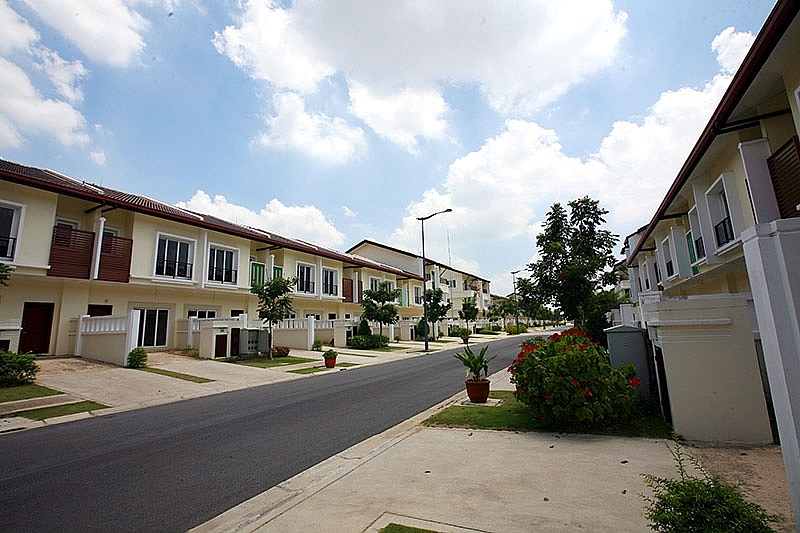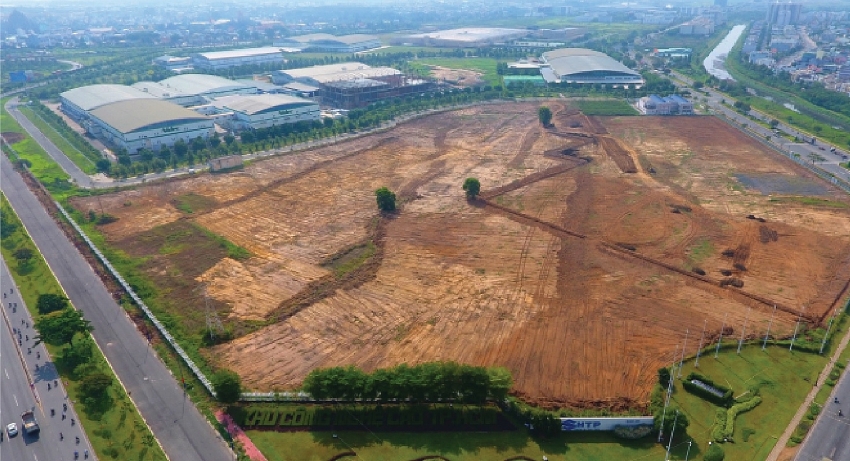Industrial zone developers: High time for action
 |
| An industrial zone needs to be well-equipped with auxiliary facilities and public utility services, such as free housing for staff and workers |
Solid grounds for development
Dang Van Quang, associate director of real estate services firm Jones Lang LaSalle Vietnam, said that if we look at the general picture of the Vietnamese real estate market, the growth potential of the industrial real estate segment is absolutely astounding.
Specifically, Vietnam has an ideal population structure for manufacturing, characterised by young, highly educated but competitive labour force living in a stable political and social environment. In addition, the country has attractive tax incentives and land rent for foreign investors. Moreover, Vietnam’s GDP has been growing at a high pace, and the government is fostering the establishment of new startups and encourages them to invest more in production and business activities.
“As a string of multinational corporations has left China or at least withdrew part of their business since the competitiveness of the economy has been declining and labour costs are no longer cheap, I believe Vietnam will attract more investors with its advantages,” Quang said.
According to data from the Ministry of Planning and Investment’s (MPI) Foreign Investment Agency, foreign direct investment (FDI) inflows into Vietnam have set new records both in 2016 and 2017. In 2016, Vietnam attracted $24.86 billion of FDI, while 2017 marked a high of $35.88 billion, a 44.4 per cent increase compared to 2016. The amount of disbursed capital in these two years was $15.8 billion and $17.5 billion, respectively.
Given the strong influx of foreign investment into Vietnam, along with the increasing number of local businesses expanding their production-business activities, the occupancy rate of industrial zones (IZs) is quite high nationwide.
In particular, according to MPI’s Economic Zones Management Department, there are 328 IZs across the country at present, taking up a total area of 96,300 hectares of natural land. Of this, 223 zones have been put in operation and 105 more are in the process of site clearance and compensation. Occupancy reached 51.5 per cent overall, and 73 per cent at operating IZs.
In addition, Vietnam also has 17 coastal economic zones (EZs) established on a land and water surface area of approximately 845,000ha, not to mention Ninh Co EZ in the northern province of Nam Dinh, which is included in the planning but has not been established yet.
IZs with high occupancy rates include Vietnam-Singapore Industrial Park III in the southern province of Binh Duong, or Que Vo I, Que Vo II, Tien Son, and Yen Phong I in the northern province of Bac Ninh, with an average occupancy rate of 85 per cent.
Ha Chan Ho, strategic advisor to Samsung, said that apart from proximity to airports and seaports, one of the top criteria for the South Korean group in choosing the location of its factories was to find an environment that facilitates the enterprise’s stable and long-term production activities and features sufficiently good supporting industries.
“We are very pleased now because Bac Ninh authorities have implemented numerous policies to attract supporting industry businesses. When we need product packaging or plastic shells, we can turn to many firms in the province,” Ho said.
 |
| Industrial zone developers are being pressed to create linkages with enterprises and authorities |
Action needed
Although there are solid grounds for the further development of industrial real estate, especially the huge demand from newly-established enterprises, there will not be many IZs that can achieve positive results if IZ developers and local authorities do not take drastic actions.
| We can consider the management Authority of an industrial zone as a “waiter” inviting customers to his place. Thus, he should serve customers in a friendly and efficient manner to please them all the time. The occupancy rate is a good measure of his services. Tran Xuan Duong Director, Ha Nam Industrial Zones Management Authority |
According to industry insiders, the key issue in IZ development is the sharing of benefits as well as creating linkages between enterprises, authorities, and IZ developers. Many IZs only focus on the construction of infrastructure, such as sewage treatment or fire protection systems, but overlook “additional services” to retain their tenants.
Nguyen Thanh Ha, chairman of SB Law, stressed that IZ developers must build zones with good infrastructure and affordable prices. Besides, local authorities need to establish a number of consumption and production centres, attach greater importance to supporting industries, and create favourable transport links to facilitate the production and export activities of the manufacturers in the zones. Increasing the number of supporting industry enterprises would help manufacturers achieve huge savings on production and transportation costs.
Sharing the same viewpoint, Assoc. Prof. Nguyen Van Hung, former principal of Hanoi University of Civil Engineering, said that success largely rides on the sharing of benefits between IZ developers and their tenants because setting up a complete and fully-functioning infrastructure system is only one of the necessary conditions, not the main factor in retaining their tenants.
“While it is true that IZ developers can set rental or service fees and if the prices are unaffordable or unreasonable, businesses will not bother to come, other factors such as poor transport infrastructure and underdeveloped supporting industries will also discourage the establishment of new businesses in the zone,” Hung emphasised.
According to Tran Xuan Duong, director of the Ha Nam Industrial Zones Management Authority, another factor in attracting and retaining businesses is the IZs management authorities.
Besides improving the business environment and reforming administrative procedures, such as issuing investment certificates or licences related to employment, construction, land, and environment, the management authority of an IZ needs to support the simplification and completion of procedures at higher levels to save more time for investors.
In addition, they need to assist enterprises in recruiting new employees and carry out necessary procedures for the registration of corporate seals and tax codes. Meanwhile, the authority has to fulfil its management duties, actively acting as a focal point for granting land use right certificates and certifying the assets on land for enterprises in the IZs. Also, they need to promptly respond to every inquiry of the businesses.
“We can consider the management authority of an IZ as a “waiter” inviting customers to his place. Thus, he should serve customers in a friendly and efficient manner to please them all the time. The occupancy rate is a good measure of his services,” Duong said, adding that most management authorities that can “please” their customers have achieved high occupancy rates and significant benefits, with Bac Ninh a typical example.
As other real estate segments are almost saturated, the potential of industrial properties need to be fully exploited. This inevitably depends on the capacity of the management authority in each IZ, which will be demonstrated through its management performance and the provision of auxiliary facilities and supporting services.
What the stars mean:
★ Poor ★ ★ Promising ★★★ Good ★★★★ Very good ★★★★★ Exceptional
Themes: Vietnam Property Outlook 2017
Related Contents
Latest News
More News
- Vietnam eases policy approval requirements, simplifies foreign and outbound investments (December 11, 2025 | 17:53)
- Unpacking new momentum in Vietnam’s M&A market (December 10, 2025 | 09:59)
- Forum honours outstanding M&A deals, strategies, and advisory firms (December 09, 2025 | 18:22)
- Vietnam enters defining phase of M&A growth (December 09, 2025 | 17:00)
- Vietnam’s M&A market opens new opportunities amid strong economic momentum (December 09, 2025 | 15:00)
- Vietnam M&A Forum 2025: new position, new momentum (December 09, 2025 | 14:30)
- FDI in Vietnam jumps on additional capital and share purchases (December 09, 2025 | 13:56)
- VIR gathers dealmakers for M&A forum (December 08, 2025 | 17:17)
- Vietnam steps up green transformation with strong policies and rising investment demand (December 06, 2025 | 12:07)
- Listed companies honoured for information transparency (December 06, 2025 | 11:59)

 Tag:
Tag:






















 Mobile Version
Mobile Version